Biology 1 Rat Practical Review - Labeled with Functions
1/95
Earn XP
Description and Tags
Name | Mastery | Learn | Test | Matching | Spaced |
|---|
No study sessions yet.
96 Terms
Right atrium
Receives deoxygenated blood from body via vena cavae.
Right ventricle
Pumps deoxygenated blood to lungs via pulmonary arteries.
Left atrium
Receives oxygenated blood from lungs via pulmonary veins
Left ventricle
Pumps oxygenated blood to whole body via aorta, has more muscle
Vena cavae
Bring deoxygenated blood to right atrium.
Pulmonary arteries
Carry deoxygenated blood to lungs.
Pulmonary veins
Return oxygenated blood to left atrium.
Aorta
Distributes oxygenated blood to body.
Atrioventricular valves
Tricuspid (right) and bicuspid/mitral (left).
Semilunar valves
Pulmonary and aortic.
Thickest myocardium
Left ventricle, due to pumping blood to body.
Trachea
Cartilage rings prevent collapse.
Lungs
Gas exchange occurs in alveoli.
Brain
Monitors CO2 levels to regulate breathing.
Diaphragm
Contracts:Increases chest volume, inhaling air. Relaxes:Decreases chest volume, exhaling air.
Liver
Metabolism, detoxification, bile production. Secretes bile, digests fats. Filters toxins/drugs and stores excess glucose in the form of glycogen
Stomach
Valves:Cardiac (esophagus) and duodenum. Secretion:Gastric juice, aids digestion. Lined with bile
Esophagus
Muscle contractions Peristalsis, Substance:Bolus.
Duodenum
Function:Receives bile and pancreatic enzymes, Begins small intestine.
Kidney
Filtration of blood, waste removal, fluid balance. Functional unit: Nephron. Tubes: Ureters carry waste to bladder.
Bladder
Stores urine, works with the kidneys get rid of waste from the blood.
Spleen
Filters blood, stores white blood cells and where white and red cells die
Thymus
Produces T cells for immune system.
Pancreas
Digestive secretion enzymes for nutrient breakdown. Endocrine secretion; insulin and glucagon.
Adrenal gland
Produces adrenaline.
Vas deferens
Transports sperm.
Seminal vesicles
Secretes seminal fluid.
Testes
Produces sperm; located in scrotum. Goes through meiosis for haploid sperm
Uterus
Tube:Fallopian tubes transport egg.
Lens
Focuses light.
Cornea
Protects.
Sclera
Supports shape of the eye
Cerebrum
Learning, sensory. Tissue: Meninges.
Cerebellum
Coordination. graceful smooth muscle movements
Ovaries
Meiosis produced to create haploid eggs into the fallopian tube or ovaduct
Medulla
Vital functions regulation.
Large Intestine
Absorb water
Bacteria
Mutualistic relationship on large intestines
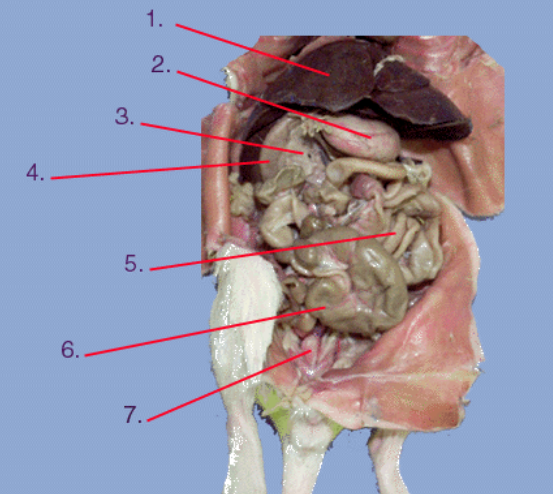
1
Liver - produces bile
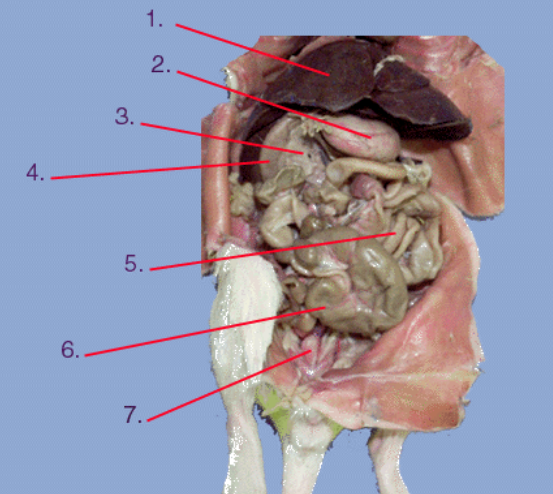
2
Stomach - large muscular sac that continues the mechanical and chemical digestion of food
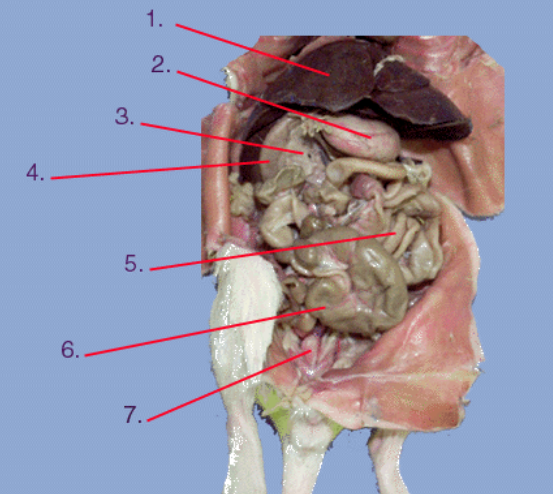
3
Pancreas - Regulates the level of sugar in the blood
5
Small Intestine -Digestive organ where most chemical digestion and absorption of food takes place
4
Duodenum - further digests food coming from the stomach, absorbs nutrients
6
Large intestines
7
Bladder - Stores urine
Spleen
Organ near the stomach that produces, stores, and eliminates blood cells

1
Trachea - carries air in and out of your lungs
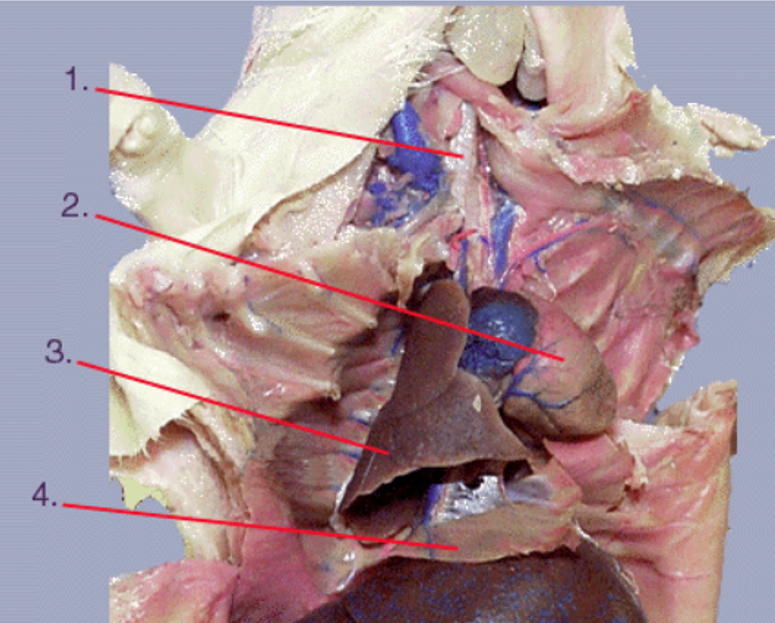
2
Heart - A hollow, muscular organ that pumps blood throughout the body.
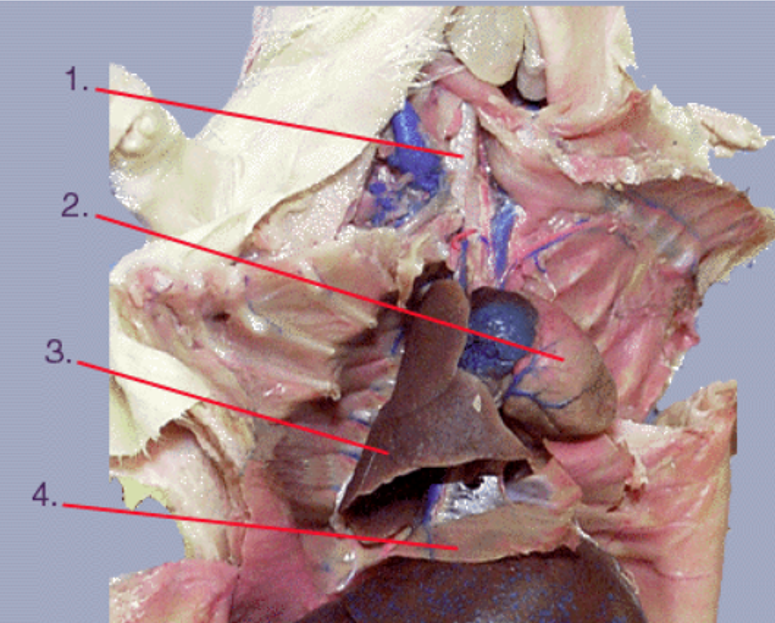
3
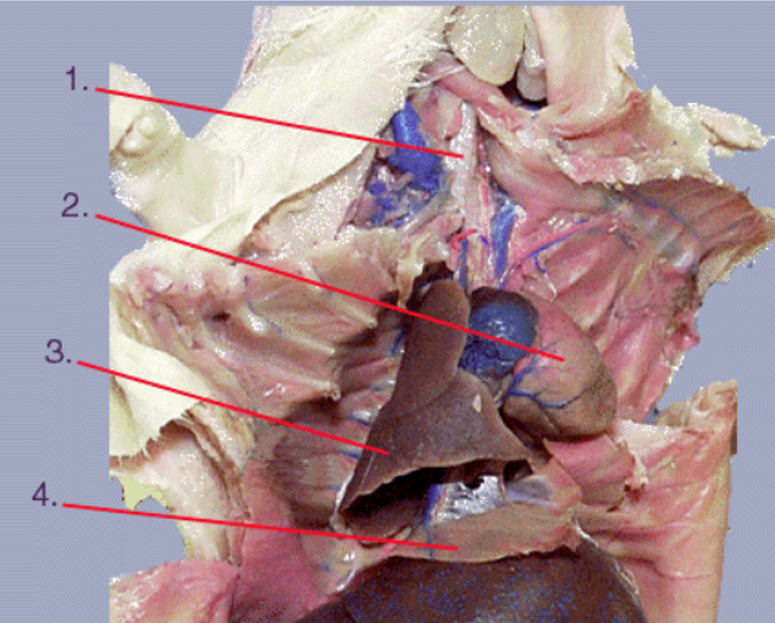
4
Diaphragm - Large, flat muscle at the bottom of the chest cavity that helps with breathing
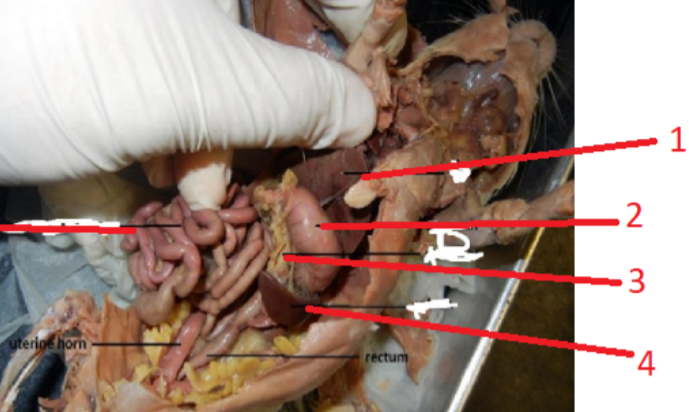
1
Liver
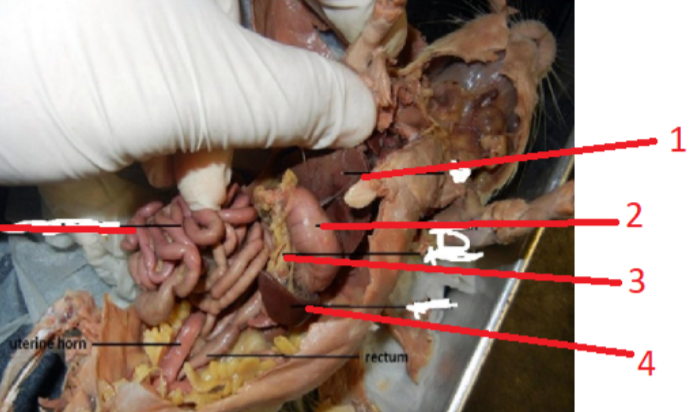
2
Stomach
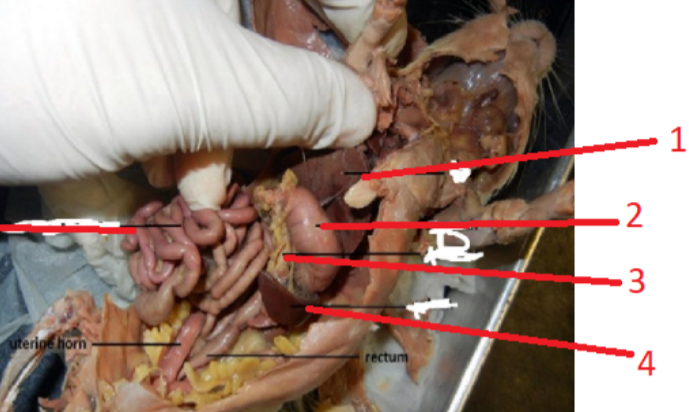
3
Pancreas
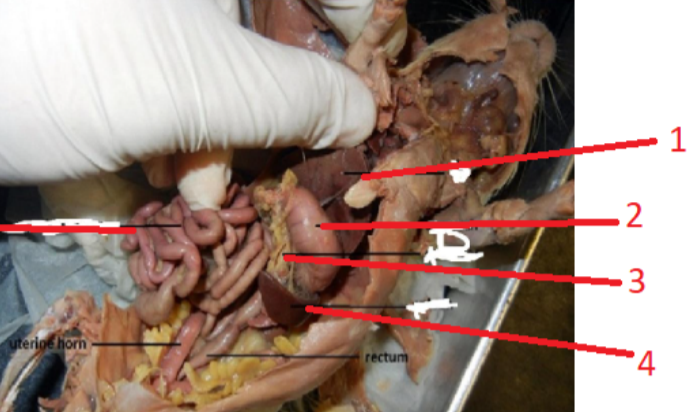
4
Spleen
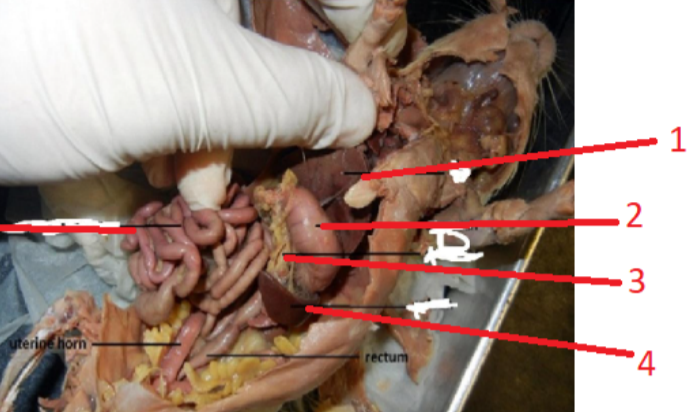
5
Intestines
 1
1
Stomach
 2
2
Kidney
 3
3
Ovary
 4
4
Oviduct
 5
5
Uterus
 6
6
Rectum
 7
7
Urinary bladder
 1
1
Coagulating gland - accessory sex gland that help with semen coagulation and sperm motility.
 2
2
Urinary bladder - stores urine and allows urination to be infrequent and controlled.
 3
3
Vas deferens - Two of these ducts, carries ejaculatory sperm out of the epididymis.
 4
4
Epidermis - transports and stores sperm cells that are produced in the testes. also brings sperm to maturity.
 5
5
Small intestines - Digests and absorbs nutrients and minerals from food.
 6
6
Vesicular Gland - Produce a majority of the fluid that makes up semen
 9
9
Testes - Secretes thyroid hormones
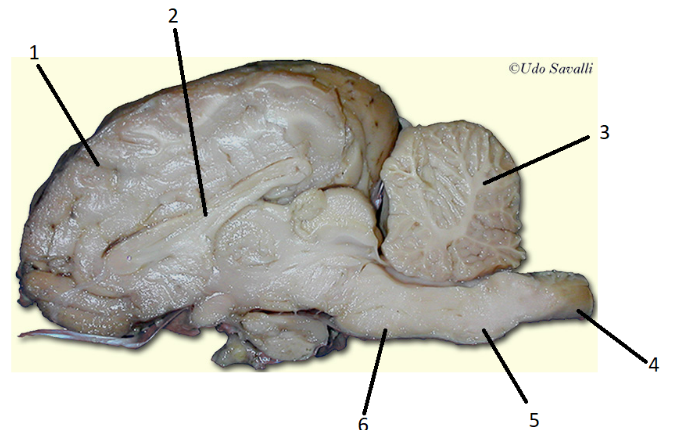
1
Frontal Lobe - Motor functions, memory, impulse control, planning
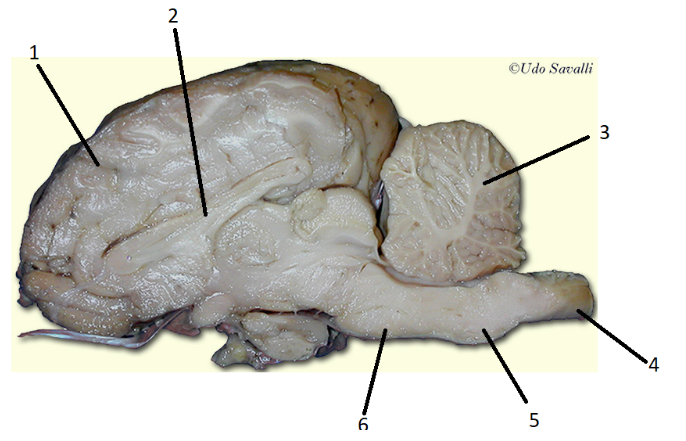
2
Corpus Callosum - allows info to transmit to one side of the brain to the other

3
Cerebellum - Thought, memory, speech, largest part of the brain
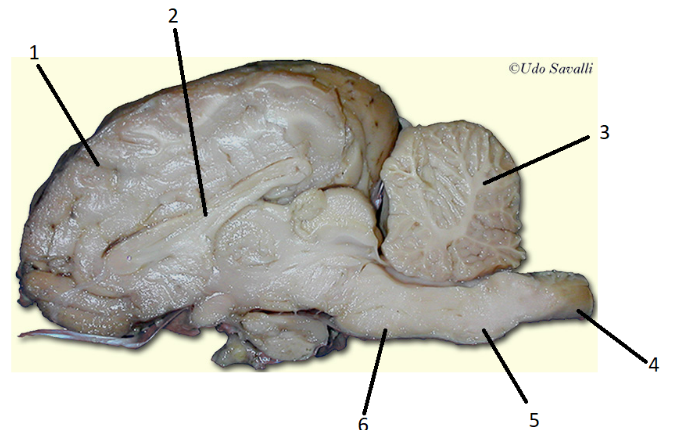
4
Spinal Cord - Sends sensory info to the brain
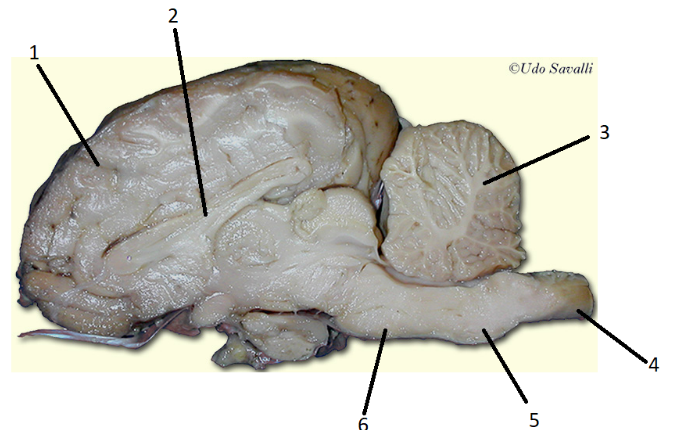
5
Medulla - Relays signals, controls breathing, swallowing chewing vomiting etc
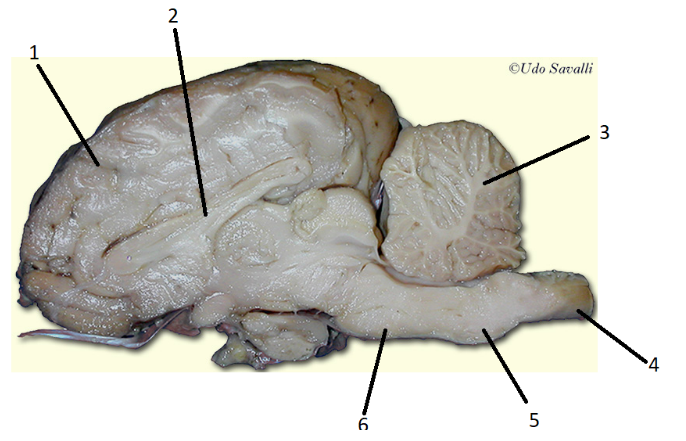
6
Pons - Relays signals between the cerebrum and cerebellum
A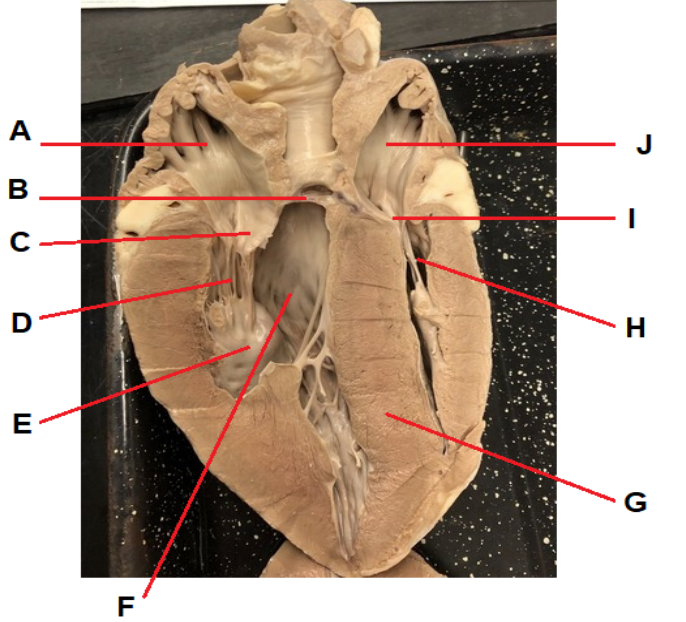
Left atrium - Chamber that collects blood from lungs
B
Aortic valve - controls blood flow into your aorta and keeps blood moving in one direction
C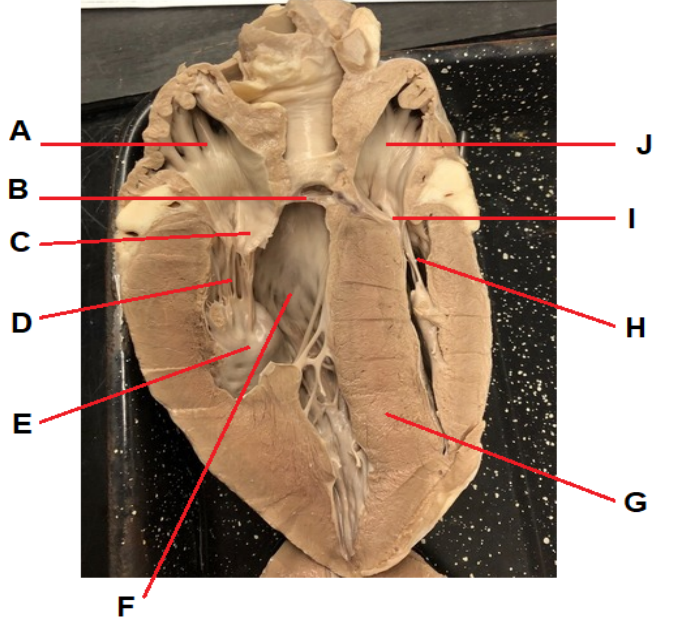
Riscuspid Valve - control the flow of blood from your heart's top chamber (right atrium) to the bottom chamber (right ventricle)
 F
F
Left ventricle - Pump in the heart that sends blood throughout the whole body.
G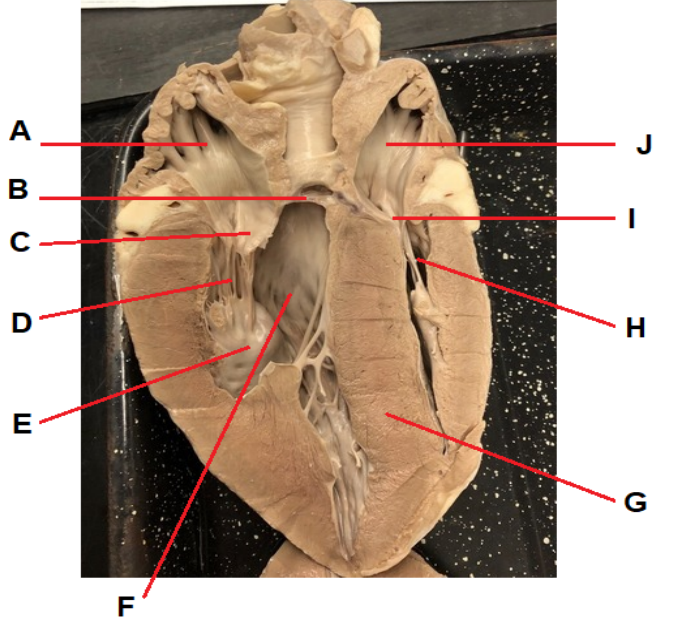
Septum - helps keep oxygen-rich blood from the lungs from mixing with oxygen-poor blood from the body, prevents blood from flowing back into the heart chambers after pumping it out.
 H
H
Tricuspid - control the flow of blood from your heart's top chamber (right atrium) to the bottom chamber (right ventricle).
I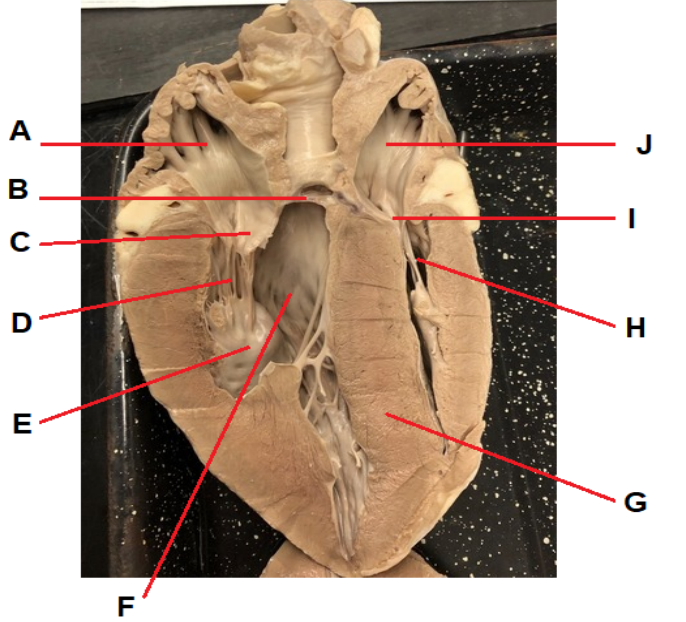 I
I
RIght ventricle - Pump in the heart that sends blood out to the lungs.
 J
J
Right atrium - Chamber that collects blood coming back from the body
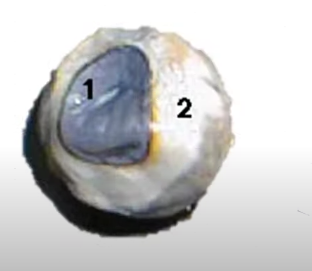
1
Cornea - Light first passes through and focuses to light. Light enters watery chaimber fluid called the aqueous humor second
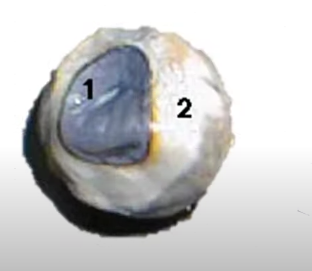
2
Sclera - “whites of eyes”, continuation of the cornea

5
Pupil - Third, hole that light passes through, size is controlled by the iris
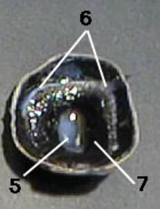
7
Ciliary Body
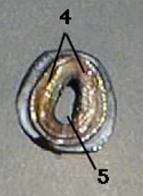
4
Iris - Ring of muscles, controls the size of the pupil
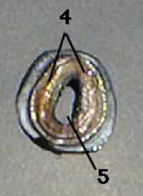
B
Pupil

3
Optic nerve - Transmits impulse to the brain
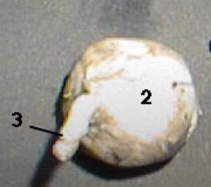
2
Sclera
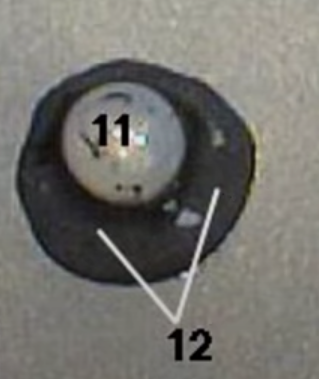
12
Vitreous Humor - Thick jelly-like substance to maintain the shape of the chamber
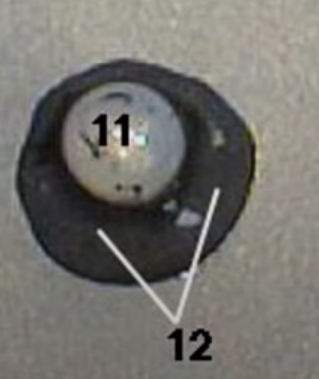
11
Lens - Fouth; Completes focusing on the light ray
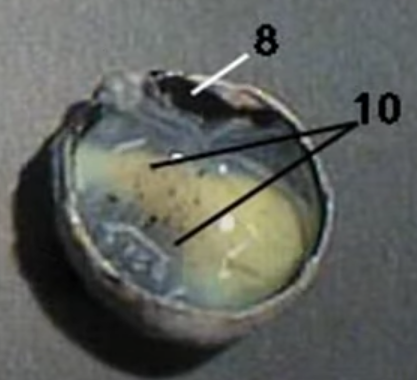
10
Retina - Nerve tissue at the back of thee eyeball that converts light energy into an electrical impulse. Made up of 2 cells; Rods & Nodes that detect shape, movement, and color
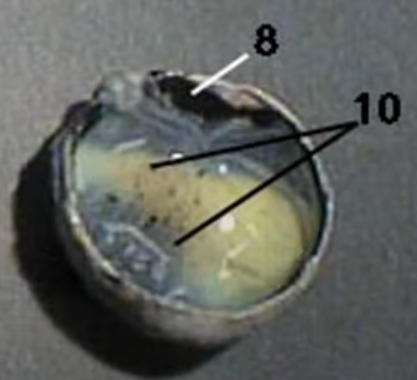
8
Choroid Coat/TL
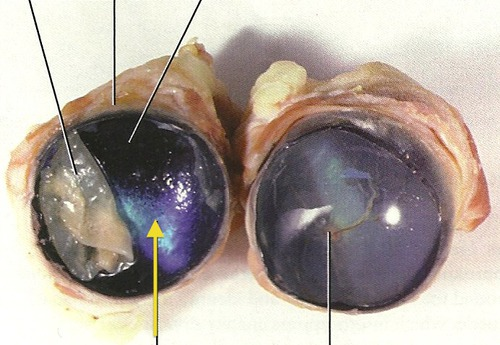
Tapeum Lucidum
Iridescent layer, blue green iridescent sheen on the choroid which reflects light and causes the eyes to shine at night when illuminated. Animals have this but humans do not.